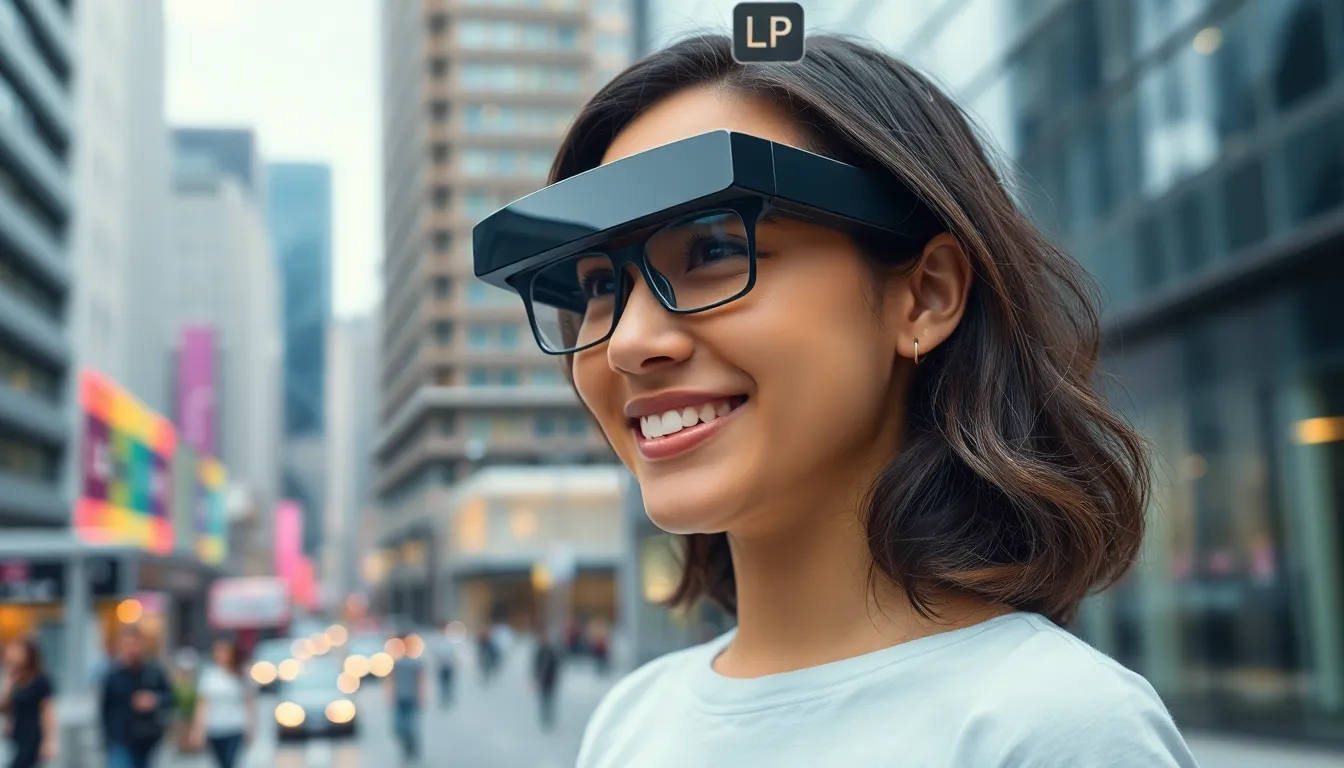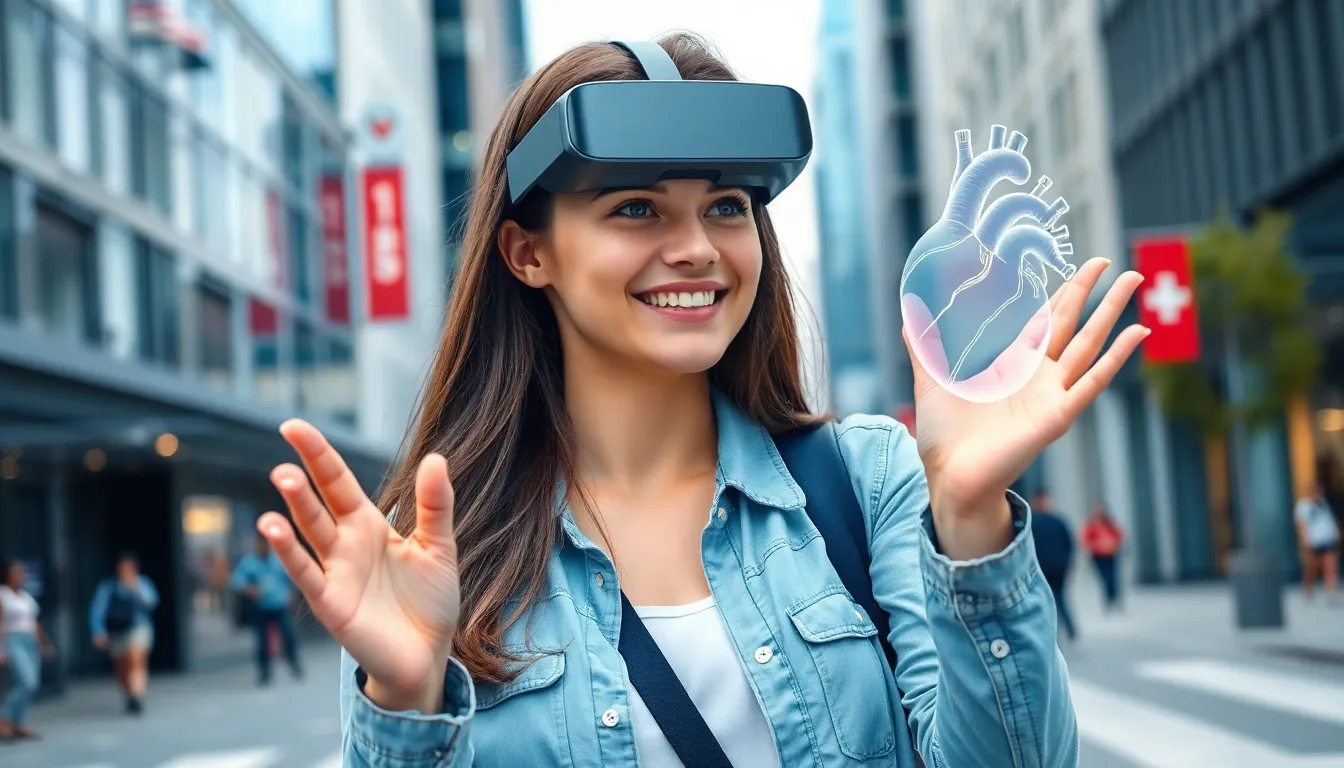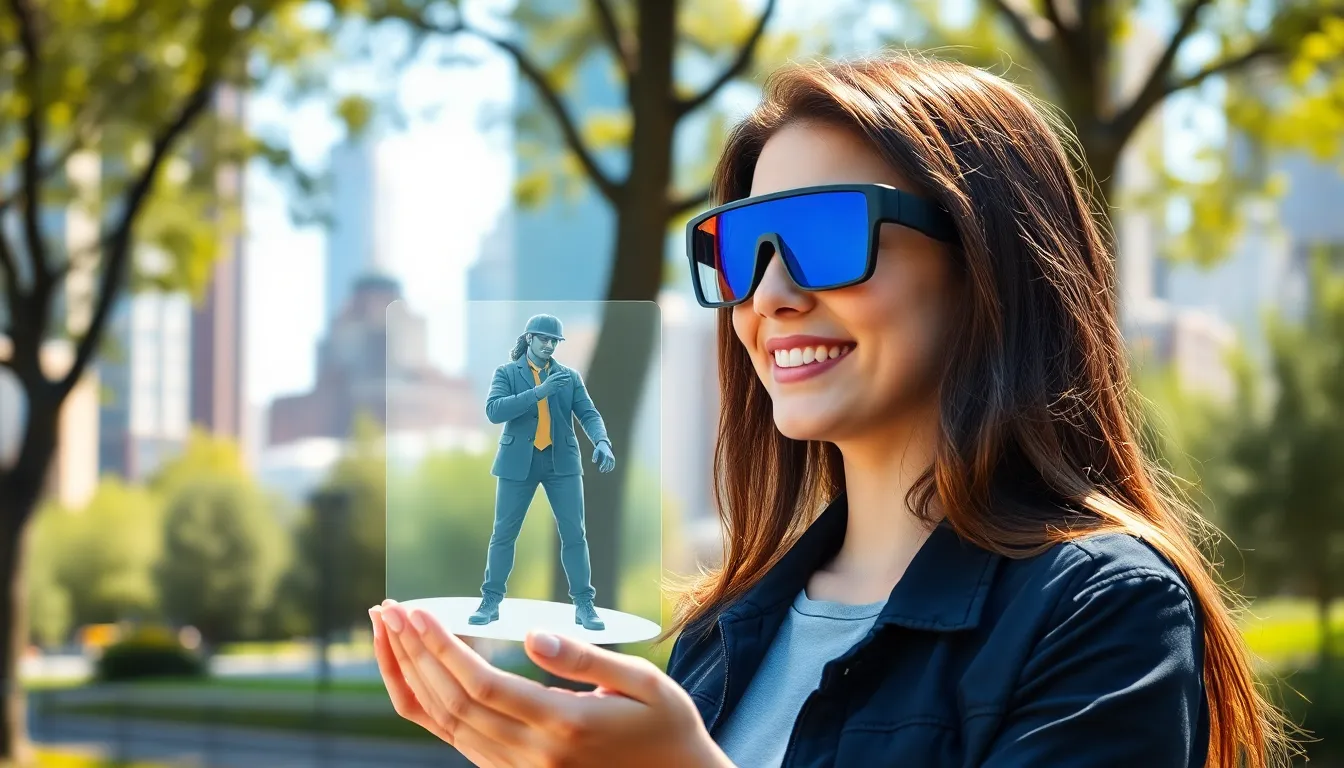In a world where digital experiences are becoming increasingly immersive, augmented reality marketing is revolutionizing how brands connect with consumers. By blending the physical and digital realms, businesses can create captivating experiences that engage customers like never before. This innovative approach not only enhances brand visibility but also fosters deeper emotional connections.
As consumers seek more interactive and personalized shopping experiences, augmented reality offers a unique solution. From virtual try-ons to interactive product demonstrations, brands leveraging this technology are setting themselves apart in a crowded marketplace. As augmented reality continues to evolve, its potential to transform marketing strategies is undeniable, making it a powerful tool for businesses aiming to thrive in the digital age.
Table of Contents
ToggleWhat Is Augmented Reality Marketing?
Augmented reality (AR) marketing incorporates digital elements into the physical environment, enhancing user engagement and interaction. Brands utilize AR to create immersive experiences that blend the real world with computer-generated imagery, allowing consumers to visualize products in their own spaces.
AR marketing often includes features such as virtual try-ons, interactive product demonstrations, and location-based experiences. For example, cosmetic brands offer AR apps that allow users to see how makeup looks on their faces through smartphones, increasing confidence in purchasing decisions. Retailers implement AR technology to let shoppers envision furniture in their homes, aiding in selection and reducing return rates.
Statistics reveal that AR marketing can significantly increase customer engagement. According to a study by Deloitte, 88% of consumers report having a favorable opinion of brands that provide AR experiences. Companies adopting AR tools improve brand visibility and foster deeper emotional connections with their target audiences.
Adoption of AR in marketing strategies promises substantial returns. Businesses that integrate AR drive customer interest, enhance user experience, and stand out in the competitive landscape of digital marketing.
Benefits of Augmented Reality Marketing


Augmented reality (AR) marketing offers numerous advantages that enhance consumer interactions with brands. It transforms traditional marketing approaches by creating more immersive and engaging experiences, ultimately leading to increased satisfaction and loyalty.
Enhanced Customer Engagement
Enhanced customer engagement is a significant benefit of AR marketing. Interactive experiences capture attention and encourage users to actively participate in exploring products. For instance, virtual try-on features allow consumers to experiment with clothing or cosmetics in real-time, significantly increasing their involvement in the shopping process. Such engagement often leads to longer session times and higher conversion rates, as consumers feel more connected to the product. Reports indicate that AR experiences can double the time spent interacting with brands, making it a key strategy for businesses aiming to boost engagement.
Improved Brand Awareness
Improved brand awareness represents another crucial benefit of AR marketing. By integrating AR into marketing campaigns, brands provide unique experiences that stand out in a crowded marketplace. Innovative AR applications attract users’ attention and generate buzz, encouraging social sharing and word-of-mouth referrals. For example, campaigns featuring location-based AR games or interactive advertisements can capture significant public interest, leading to increased visibility. Studies show that brands using AR report a 70% increase in brand recall, highlighting the effectiveness of AR in making lasting impressions on consumers.
Popular Examples of Augmented Reality Marketing
Several brands across different industries leverage augmented reality (AR) to enhance customer engagement and create memorable experiences. Below are key case studies illustrating AR’s impact.
Case Study: Retail Industry
IKEA utilizes AR through its “IKEA Place” app, allowing customers to visualize furniture in their homes before purchasing. This application enables users to place 3D models of products in their living spaces, ensuring better fit and style compatibility. In a distinct effort, Sephora’s “Virtual Artist” app offers consumers the chance to try on makeup virtually, providing an interactive and personalized shopping experience. These AR solutions significantly increase consumer confidence in their purchasing decisions, leading to higher sales conversions.
Case Study: Entertainment Industry
The Pokémon GO phenomenon showcased AR’s potential in the entertainment sector. The game transformed real-world locations into interactive gaming environments, engaging millions of users worldwide. Players capture virtual creatures, promoting both physical activity and social interaction. Furthermore, the Harry Potter: Wizards Unite game used AR to blend storylines with real-world exploration, allowing fans to experience the magic in their everyday surroundings. These innovative applications of AR not only enhance user engagement but also create community bonds among players, proving the effectiveness of immersive marketing strategies in entertainment.
Challenges in Implementing Augmented Reality Marketing
Implementing augmented reality (AR) marketing presents several challenges that businesses must navigate. Two significant hurdles include technical barriers and cost considerations.
Technical Barriers
Technical barriers can impede the implementation of AR marketing strategies. Developing AR applications requires specific expertise in software and hardware integration. Businesses face challenges related to platform compatibility, ensuring that AR experiences function seamlessly across various devices. Additionally, the varying quality of smartphones and tablets can limit user experience, as not all devices support advanced AR features. The need for robust internet connectivity also poses a challenge, as high-quality AR experiences often rely on reliable data access. Finally, creating compelling AR content demands skilled designers and developers, which can strain resources for smaller companies.
Cost Considerations
Cost considerations can significantly affect the adoption of AR marketing initiatives. Developing and deploying AR solutions often involves substantial investments in technology, software development, and design. Businesses must account for ongoing maintenance and updates to keep AR content relevant and engaging. Furthermore, training staff to manage AR campaigns can incur additional expenses. As companies evaluate potential returns on investment, the initial financial outlay may deter some from fully embracing AR marketing despite its proven effectiveness in boosting customer engagement and brand awareness.
Future Trends in Augmented Reality Marketing
Emerging trends in augmented reality (AR) marketing showcase the technology’s evolving impact on consumer interactions. Innovations in AR enhance personalization, improve user experiences, and adapt to evolving consumer preferences.
- Increased Personalization
AR marketing evolves toward high levels of personalization, offering tailored experiences based on individual consumer data. Brands leverage user preferences, behavior, and location to create customized AR interactions, fostering deeper connections with consumers.
- Integration with Artificial Intelligence
AR marketing increasingly integrates with artificial intelligence (AI) to enhance user interactions. AI-driven systems analyze consumer behavior, enabling AR applications to provide relevant recommendations and real-time adjustments during user engagement.
- Rise of Social AR
Social media platforms incorporate AR features, allowing users to share AR experiences seamlessly. Brands partner with social networks for interactive campaigns, enhancing brand visibility through user-generated content and viral marketing.
- Expansion of AR in Retail
Retailers increasingly utilize AR for immersive product demonstrations, creating virtual showrooms and guided shopping experiences. Virtual try-ons and AR-enabled catalogs enhance customer decision-making, boosting both engagement and conversion rates.
- Enhanced Location-Based AR Experiences
Advances in location-based AR deliver contextually relevant content to users based on their geographic location. Brands create unique experiences tailored to specific venues or events, fostering real-time engagement and interaction during consumer outings.
- Utilization of 5G Technology
The rollout of 5G technology enables higher bandwidth and reduced latency, allowing for smoother AR experiences. Brands can implement AR campaigns with rich graphics and interactive elements, reaching consumers with increased speed and reliability.
- Focus on Health and Safety
The pandemic heightened the importance of health and safety in marketing. Brands integrate AR to offer virtual consultations, product interactions, and contactless shopping experiences, ensuring consumer safety while maintaining engagement.
- Sustainability Messaging through AR
Brands increasingly use AR to promote sustainability initiatives. Interactive AR content illustrates environmentally friendly practices, appealing to eco-conscious consumers and differentiating brands in the market.
These trends highlight AR marketing’s dynamic nature and its potential to shape future consumer interactions. By embracing these innovations, brands can ensure they remain competitive and relevant in an evolving digital landscape.






